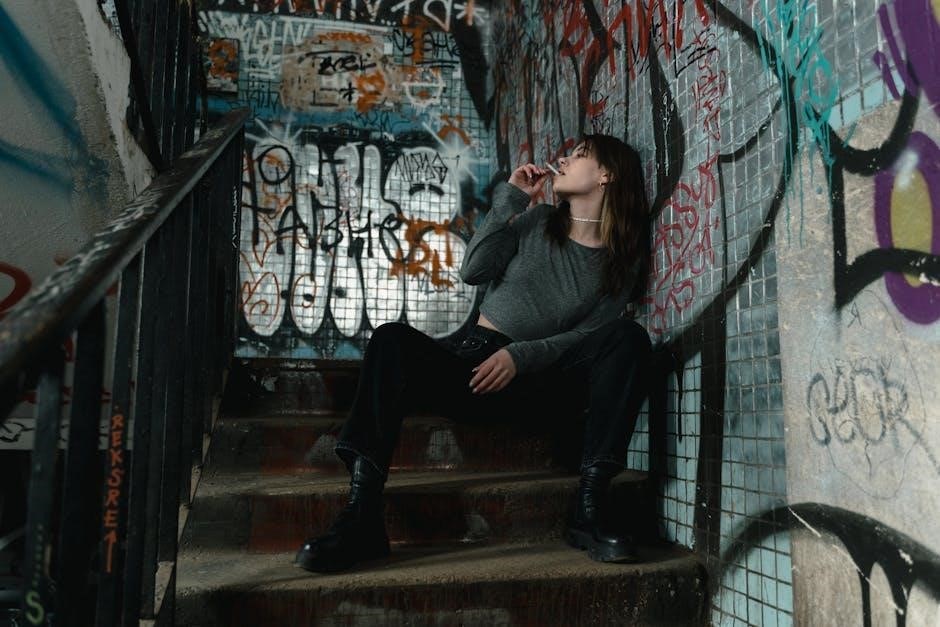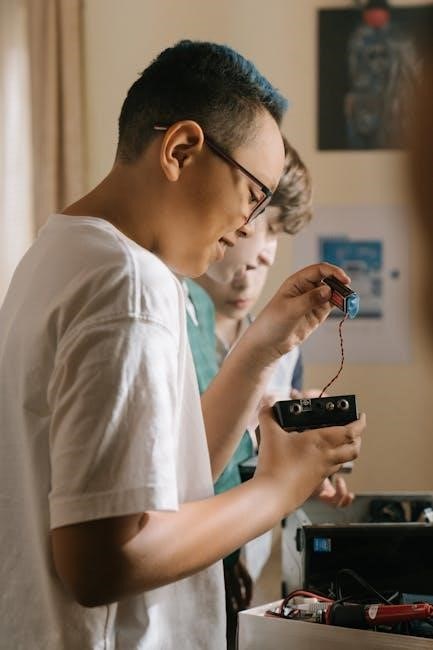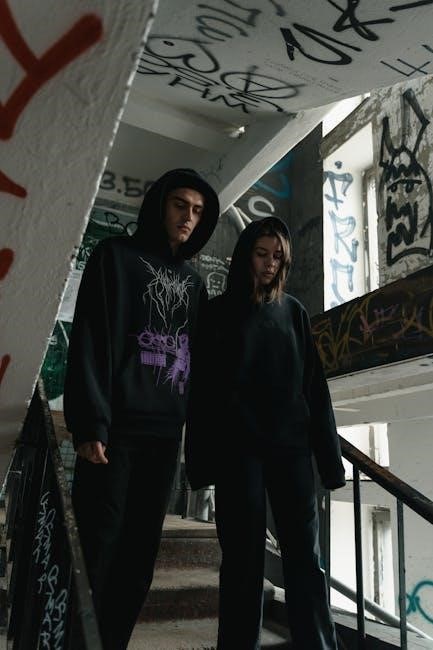young’s double slits experiment explained pdf

Young’s Double Slit Experiment Explained
Young’s double-slit experiment elegantly demonstrates the wave nature of light. By passing coherent light through two narrow slits, an interference pattern of bright and dark fringes emerges on a screen. This phenomenon provides compelling evidence for the wave-like behavior of light and matter.
Young’s double-slit experiment, a cornerstone of physics, offers a profound glimpse into the nature of light and matter. Conceived by Thomas Young in the early 19th century, this experiment provided compelling evidence for the wave theory of light, challenging the prevailing corpuscular theory championed by Isaac Newton. The experiment’s brilliance lies in its simplicity: coherent light is directed through two closely spaced slits, resulting in an interference pattern on a screen behind the slits.
This pattern, characterized by alternating bright and dark fringes, demonstrates the wave-like behavior of light. Where the waves from the two slits arrive in phase, they interfere constructively, creating bright fringes. Conversely, where they arrive out of phase, they interfere destructively, creating dark fringes. The experiment’s impact extends far beyond optics, laying the foundation for understanding wave-particle duality and quantum mechanics.
The double-slit experiment continues to captivate scientists and students alike, serving as a powerful illustration of fundamental principles. Its elegance and accessibility make it an ideal starting point for exploring the strange and wonderful world of quantum phenomena. The experiment’s enduring legacy underscores its significance in shaping our understanding of the universe.

Historical Context: Thomas Young and the Wave Theory of Light
In the early 19th century, the nature of light was a subject of intense debate. Isaac Newton’s corpuscular theory, which posited that light was composed of tiny particles, held sway. However, Thomas Young, an English polymath, challenged this prevailing view with his revolutionary wave theory of light. Young’s work was inspired by observations of interference phenomena, where light appeared to behave like waves, similar to ripples on water.
In 1801, Young conducted his famous double-slit experiment, providing compelling evidence for the wave nature of light. By passing light through two closely spaced slits, he observed an interference pattern of bright and dark fringes, a phenomenon that could only be explained by wave interference. This experiment was a pivotal moment in the history of physics, marking a significant shift in our understanding of light.
Young’s wave theory faced initial resistance, as Newton’s authority was deeply entrenched. However, the evidence from the double-slit experiment and other experiments gradually convinced the scientific community of the validity of the wave theory. Young’s work laid the foundation for James Clerk Maxwell’s electromagnetic theory of light, which further solidified the wave nature of light and its connection to electricity and magnetism.
The Double Slit Setup: Components and Arrangement
The Young’s double-slit experiment requires a specific arrangement of components to successfully demonstrate the interference of light. The core components include a light source, a double-slit barrier, and a screen for observing the interference pattern. The light source should ideally be monochromatic and coherent, meaning it emits light of a single wavelength and the waves are in phase.
The double-slit barrier is a thin opaque material with two closely spaced, narrow slits. The slits act as secondary sources of light, diffracting the incident light waves. The distance between the slits is a crucial parameter that affects the spacing of the interference fringes. The screen is placed at a certain distance from the double-slit barrier to observe the interference pattern.
The arrangement of these components is critical. The light source must illuminate the double slits uniformly. The slits must be narrow enough to ensure significant diffraction of the light waves. The screen must be placed far enough from the slits to allow the interference pattern to develop. The entire setup should be shielded from stray light to ensure a clear and visible interference pattern. Precise alignment of the components is essential for obtaining optimal results in the double-slit experiment.

Creating Coherent Light Sources
Generating coherent light is crucial for observing clear interference patterns in Young’s double-slit experiment. Coherent light sources emit waves that maintain a constant phase relationship, allowing for constructive and destructive interference. Historically, achieving coherence posed a significant challenge, but modern technology offers several methods.
One approach involves using a monochromatic light source, such as a laser. Lasers emit highly coherent light due to the stimulated emission process, where photons are emitted in phase with each other. Another method is to employ a spatial filter, which involves passing light through a pinhole to create a point source. This point source then illuminates the double slits, ensuring that the light waves arriving at the slits are coherent.
Alternatively, one can use a traditional light source, like a lamp, in conjunction with a narrow filter to select a specific wavelength range. This quasi-monochromatic light can then be passed through a small aperture to improve spatial coherence. It’s important to note that the coherence length of the light source must be greater than the path difference between the two slits to observe a distinct interference pattern. Proper selection and preparation of the light source are paramount for a successful double-slit experiment.
Interference Pattern Formation: Constructive and Destructive Interference
The hallmark of Young’s double-slit experiment is the formation of an interference pattern on the screen, a direct consequence of the wave nature of light. This pattern arises from the superposition of light waves emanating from the two slits. When the waves arrive at a point on the screen in phase, their amplitudes add constructively, resulting in a bright fringe, also known as a region of constructive interference.
Conversely, when the waves arrive out of phase by half a wavelength (or an odd multiple thereof), their amplitudes cancel each other out, leading to a dark fringe, representing destructive interference. The alternating bright and dark fringes create the characteristic interference pattern. The position of these fringes depends on the wavelength of the light, the separation between the slits, and the distance from the slits to the screen.
Constructive interference occurs when the path difference between the waves from the two slits is an integer multiple of the wavelength (mλ, where m is an integer). Destructive interference happens when the path difference is a half-integer multiple of the wavelength ((m+1/2)λ). This interplay of constructive and destructive interference vividly illustrates the wave-like behavior of light, confirming Young’s hypothesis and laying the foundation for understanding wave phenomena.
Mathematical Derivation of Fringe Spacing
The fringe spacing in Young’s double-slit experiment can be derived mathematically, providing a quantitative understanding of the interference pattern. Let ‘d’ represent the distance between the two slits, ‘L’ the distance from the slits to the screen, and ‘λ’ the wavelength of the light. We aim to find the distance ‘Δy’ between adjacent bright (or dark) fringes.
For small angles, we can approximate sinθ ≈ tanθ ≈ y/L, where ‘y’ is the distance from the center of the screen to a particular fringe. For constructive interference (bright fringes), the path difference between the waves from the two slits is dsinθ = mλ, where ‘m’ is an integer representing the order of the fringe (m=0 for the central bright fringe, m=1 for the first bright fringe, etc.).
Substituting the small-angle approximation, we have d(y/L) = mλ. The position of the m-th bright fringe is then y_m = (mλL)/d. The fringe spacing, Δy, is the difference in position between two adjacent bright fringes: Δy = y_(m+1) ― y_m = ((m+1)λL)/d ⎻ (mλL)/d = (λL)/d.
Therefore, the fringe spacing Δy is directly proportional to the wavelength λ and the distance to the screen L, and inversely proportional to the slit separation d. This equation allows us to predict and analyze the interference pattern formed in Young’s double-slit experiment.
Factors Affecting Fringe Width (Wavelength, Slit Separation, Distance to Screen)
The fringe width, or the spacing between adjacent bright or dark fringes, in Young’s double-slit experiment is influenced by several key factors: the wavelength of the light used, the separation between the slits, and the distance from the slits to the screen. Understanding these relationships allows for precise control and manipulation of the interference pattern.
Firstly, the fringe width is directly proportional to the wavelength (λ) of the light. This means that longer wavelengths, such as red light, will produce wider fringes compared to shorter wavelengths, such as blue light. This relationship is evident in the equation Δy = (λL)/d, where Δy represents the fringe width.
Secondly, the fringe width is inversely proportional to the separation (d) between the two slits. Decreasing the slit separation will result in wider fringes, while increasing the slit separation will lead to narrower fringes. This inverse relationship is also apparent in the equation Δy = (λL)/d.
Finally, the fringe width is directly proportional to the distance (L) from the slits to the screen; Increasing the distance to the screen will cause the fringes to become wider and more spread out, while decreasing the distance will result in narrower and more closely spaced fringes. Again, this is reflected in the equation Δy = (λL)/d.
In summary, manipulating the wavelength, slit separation, and distance to the screen provides control over the fringe width in Young’s double-slit experiment.
Experimental Considerations and Setup at Home
Replicating Young’s double-slit experiment at home requires careful attention to detail and some ingenuity. While a sophisticated laboratory setup provides optimal results, a simplified version can be constructed using readily available materials. A key consideration is creating coherent light sources. While lasers are ideal, a distant, filtered light source can approximate coherence.
For the double slits, a razor blade can be used to carefully create narrow slits in a piece of opaque material like aluminum foil or cardboard. The slits must be very close together and parallel. The quality of the slits significantly impacts the clarity of the interference pattern.
The distance between the slits and the screen is also crucial. A greater distance will produce a more visible, albeit dimmer, pattern. Experimenting with different distances is recommended to find the optimal balance.
To enhance visibility, the experiment should be conducted in a darkened room. Stray light can wash out the faint interference fringes. Shielding the light source to direct light only toward the slits is also important.
Analyzing the resulting pattern can be challenging. The fringes may be faint and require careful observation. Using a magnifying glass can aid in visualizing the interference pattern. With patience and meticulous adjustments, Young’s double-slit experiment can be successfully demonstrated at home.

Applications of Young’s Double Slit Experiment
Young’s double-slit experiment, beyond its fundamental role in demonstrating the wave nature of light, has far-reaching applications in various fields. The principles of interference and diffraction, first revealed by this experiment, are crucial in the development of advanced technologies.
One notable application is in interferometry, a technique used to measure distances and displacements with extreme precision. Interferometers, based on the principles of wave interference, are employed in surveying, astronomy, and materials science. They enable the detection of minute changes in distance, making them invaluable in detecting gravitational waves and characterizing surface properties.
Another significant application is in holography, a technique for creating three-dimensional images. Holograms rely on the interference of light waves to record and reconstruct the amplitude and phase of light reflected from an object.
Furthermore, the double-slit experiment’s principles find application in quantum computing. The superposition and interference of quantum states, analogous to the interference of light waves, are exploited to perform complex calculations.
In essence, Young’s double-slit experiment serves as a cornerstone for understanding wave phenomena. It is used in a wide range of advanced technologies that shape our modern world, from precision measurements to advanced imaging and quantum information processing;
Wave-Particle Duality and the Double Slit Experiment
The double-slit experiment takes on even greater significance when considering the concept of wave-particle duality, a cornerstone of quantum mechanics. This concept posits that particles, such as electrons and photons, can exhibit both wave-like and particle-like properties.
When individual particles are sent through the double-slit apparatus one at a time, an interference pattern gradually builds up on the screen, even though each particle passes through only one slit. This seemingly paradoxical behavior suggests that each particle somehow “knows” about the existence of both slits and interferes with itself.
The act of observing which slit a particle passes through destroys the interference pattern, causing the particles to behave as if they were simply passing through one slit or the other. This observation highlights the fundamental role of measurement in quantum mechanics. The wave function collapses upon measurement, forcing the particle to manifest either its wave-like or particle-like nature.
The double-slit experiment with single particles showcases the counterintuitive nature of quantum mechanics. It challenges classical notions of determinism and locality. It demonstrates that particles do not possess definite properties until they are measured, and that the act of measurement inevitably affects the system being observed. The experiment has profound implications for our understanding of the fundamental nature of reality.
Modern Interpretations and Significance

Young’s double-slit experiment continues to be a cornerstone of modern physics, offering profound insights into the quantum world. Its enduring significance lies in its ability to challenge classical intuitions and reveal the fundamental nature of reality. Modern interpretations of the experiment delve into the mysteries of quantum mechanics, exploring concepts such as superposition, entanglement, and quantum decoherence.
One prevailing interpretation suggests that particles exist in a superposition of states, meaning they can be in multiple states simultaneously until measured. In the double-slit experiment, a particle in superposition passes through both slits at once, creating the interference pattern. The act of measurement forces the particle to collapse into a single, definite state.
The experiment also raises questions about the role of consciousness in quantum mechanics. Some interpretations propose that consciousness plays a role in collapsing the wave function, leading to the observed outcome. However, this remains a topic of debate and ongoing research.
Beyond its theoretical implications, the double-slit experiment has practical applications in quantum computing and quantum cryptography. It serves as a basis for developing new technologies that harness the unique properties of quantum systems. Its enduring legacy as a fundamental experiment continues to shape our understanding of the universe at its most basic level.